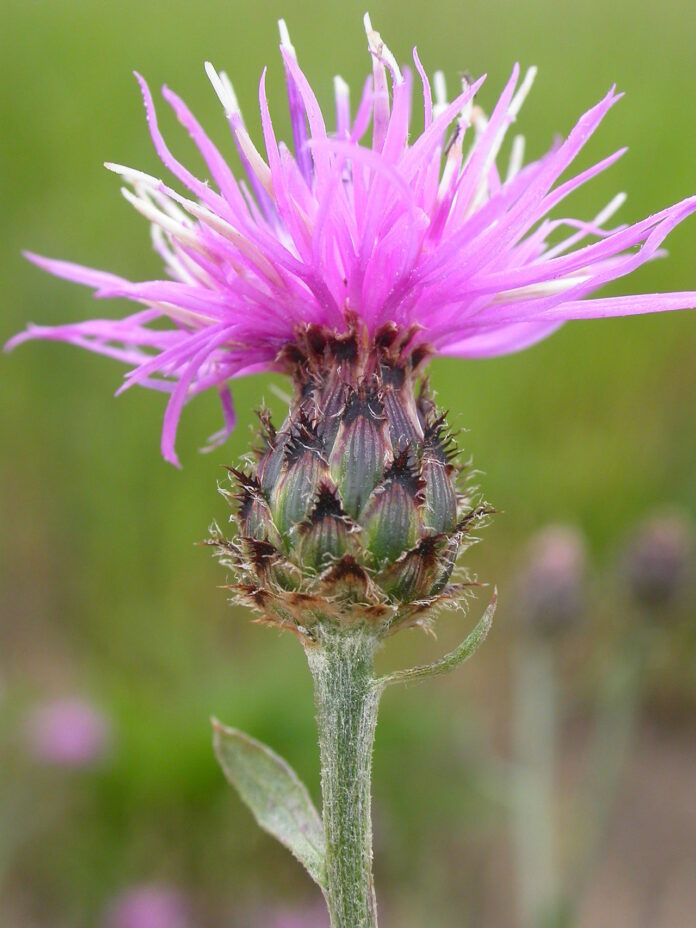
BY BLAINE BUG CREW

When I was a kid, we milked 75 cows on our family dairy. Each cow had its own name and definitely its own personality. My friends would sometimes come over to watch us milk. As they observed, my brothers and I called each cow by name and handled each cow differently. They would often ask in an exasperated voice, “How can you tell these cows apart—they all look the same!”
To most Idahoans, the same thing can be said about noxious weeds. However, after close inspection, each weed has its own unique characteristics, much as our cows did. Today, we will more closely examine spotted knapweed.
Spotted knapweed is an herbaceous, short-lived perennial reproducing entirely by seed. Producing up to 25,000 seeds per plant, the seeds can remain viable in the soil for up to eight years. Flowers range in color from pink to light- purple and bloom from July to October. The bracts of the flower heads are black-tipped, giving the plant its characteristic “spotted” appearance. Seeds are brown to black in color, smooth, and less than 0.25-inch long. Stems are typically 2 to 4 feet tall, with lower leaves that are deeply lobed and upper leaves that are more linear. Spotted knapweed prefers moist rangeland habitats, but is common in waste areas, along roadsides, and in pastures. This plant, luckily, has a biological enemy.
Larinus Minutus is an abundant biological control agent that can utilize spotted, diffuse, and squarrose knapweeds. LA overwinters as an adult. Adults emerge in the spring when they begin to feed on knapweed foliage. Females produce between 28 and 30 eggs that they lay in clusters in open flowers. Eggs hatch and larvae feed on seeds and receptacle tissue for about a month. Larvae construct cocoons within the seed heads using pappus hairs and pupate. Emerging adults chew a characteristic round hole in the top of the cocoon that is visible when viewed from above.
So, the next time someone tells you “a weed is a weed is a weed,” you can set them straight. If you see this noxious weed, do your part to keep Blaine County native by contacting the Blaine County Weed Department by calling (208) 788-5574.


